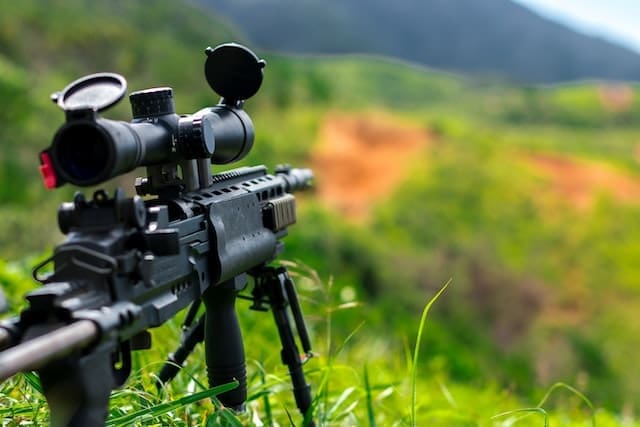There are many types of guns, depending on their models and functionality. You can keep up with the firearm industry trends by browsing Arms Directory, the online community platform of licensed gun professionals and enthusiasts alike. However, one thing will always be true – automatic and semi-automatic are the broadest divisions of the gun types. Here is a breakdown of semi-automatic vs. automatic guns.
Workings of semi-automatic guns
Semi-automatic guns are self-loading firearms meaning that a round of ammunition automatically loads itself into the chamber after the subsequent is fired away. However, the second cartridge round does not lodge unless the trigger is activated manually.
There are two ways in which a semi-automatic gun can reload itself including:
Recoil blowback
When the trigger mechanism is activated, a recoil force is produced. The force sends out the used cartridge and loads another one automatically. The blowback mechanism is most effective on small caliber firearms such as semi-automatic pistols or high-powered guns through variations like delayed blowback.
Gas operation mechanism
The gas operation mechanism uses the gasses released when the trigger is pulled, and a bullet is fired to lodge the cartridge into the chamber. When a bullet is fired, gas is released. The gas is caught by a tube and sent to the gas block.
The gas in the gas block is moved to the bolt key to start the loading process. Examples of firearms that use gas operation mechanisms include short-stroke and long-stroke pistons.
Semi-automatic guns operate in the same manner as a revolver. Although revolvers release one round of ammunition each time the trigger is pulled, it is not classified as a semi-automatic gun.
The main difference between a semi-automatic vs. revolver is that revolvers have more straightforward mechanics than semi-automatic guns; hence are easier to operate and more reliable.
Semi-automatic vs. Automatic
An automatic gun is a firearm that continuously loads and releases bullets when the trigger is activated. On the other hand, a semi-automatic gun loads several rounds of cartridge but fires once when the trigger mechanism is activated. Both automatic and semi-automatic firearms are self-loading or autoloading.
So, the main difference between semi-automatic and automatic guns is that a semi-automatic gun fires one bullet each time the trigger is pulled. In contrast, automatic guns release bullets continuously when fired until the trigger is released.
Safety technology and tips

Owning a gun comes with a lot of responsibility. The concept of “smart gun responsibility” refers to the collective obligation of private gun owners for vital life-saving purposes and sufficient responsibility against unauthorized firearm usage.
Smart gun technology includes ownership of private guns and additional safety devices such as safes, locks, and gun tracking technologies. These technologies keep unauthorized users from accessing guns. The smart gun technology works through three aspects that include:
- Proper identification of the legally registered firearm users;
- Authentication of the additional gun accessories and devices that the registered firearm user owns;
- Release of the registered firearm to the registered users;
Can I Sell my gun? This is one of the most asked questions by first-time firearm owners. You can sell your gun in three ways:
- Federally licensed firearms dealer (FFL);
- Ask for a background check from the FFL;
- Obtain approval from the Department of State Police;
Generally, all firearm sales must be made through a federally licensed firearms dealer (FFL). However, the law varies in different states. Some states, such as Alabama, do not require background checks to allow the selling and buying of firearms.
Federal law prohibits some specific groups of people from selling or buying firearms. The groups include:
- Felons and convicts
- Illegal drug users
- Persons under arraignment
- Escapees and fugitives
- Illegal aliens
- Convicts of domestic violence
- Underage citizens
- People with mental illness
- Military people served with Dishonorable Discharge
- Individuals whose citizenship has been recalled
Advantages of gun security include public safety and anti-theft protection. Responsible gun handling protects children from stray shootings, prevents suicide through shootings, and reduces public assaults.
Every gun owner should practice general gun handling safety practices:
- Always keep the muzzle pointed in a safe direction, i.e., away from anything you do not intend to shoot. The ground is the most appropriate direction to point your idle gun.
- Ensure that there is no ammunition in the magazine or chamber before loading your firearm.
- Read the manual and ensure you learn all the instructions for handling each firearm under your care.
- Do not modify your gun; ensure that all your guns and accessories are well-maintained.
- Always wear protective gear such as earmuffs and glasses when shooting.
- Take care when you pull the trigger, but the gun fails to fire; alternatively, check if the cartilage is correctly loaded before shooting again.
- Always use the recommended ammunition with your firearm.
- Be aware of your target and the environment before shooting.
- Keep your firearm unloaded unless you intend to shoot.
The abovementioned rules, when followed correctly, will help you avoid self and unintentional public injury.
In conclusion
Some guns are not categorized as automatic or semi-automatic such as the revolver. However, it is important to understand the differences between the various types of firearms and the necessary legal procedures before buying one. It is important to note that automatic quick-firing guns are faster than semi-automatic ones but harder to obtain. So, those who want a firearm should determine whether it is appropriate for their purpose and familiarize themselves with the applicable laws.
Featured Photo by Thomas Tucker on Unsplash




